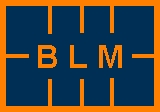Non-invasive, mobile continuous medical sensor technology
Medical sensor technology has a Janus face: actually, everybody is familiar with it, e.g., in the form of fever thermometers or in the form of ECG or blood pressure measurement. On the other hand, the medical sensor technology is quite unknown in its high tech formoutside of medical specialist circles. However, the medical sensor technology has recently aroused public interest as a totally new species of technology: as a “non-invasive mobile continuous monitoring.” There are three good reasons for this:
- Medical sensor technology for outpatient care: The duration of hospital stays has become shorter and shorter and many interventions are carried out as outpatient care. It is nevertheless vital that the outpatient not be left without surveillance. He / she should be monitored by means of smart human sensors in order to make sure that any potential risks can be recognized and dealt with on time.
- Medical sensor technology for monitoring during sport, fitness and leisure time: There are more and more health-conscious people who want to maintain their health and are eager to adopt new technologies to achieve this. This is also valid for outpatient treatment as well as for rehabilitation measures of all kinds: from training in a fitness centre to cross-country exercise; from stepper training for inpatient therapies to for rehab at home. Smart human sensors would provide health-conscious people with the option of monitoring their state of health and to transfer relevant data to their doctor or to a hospital. In contrast to hospital conditions or the conditions at a medical practitioner’s surgery, monitoring of therapies in everyday life is so valuable, because it is carried out under perfectly normal circumstances.
- Medical sensor technology for professional life: Many occupations carry with them certain risks – the professional associations have recognized this and quantify this conscientiously. This is valid not only for firefighters, occupational divers, pilots etc. but also for professional drivers, chemical workers etc. the list is long. With new human sensors people can be monitored during professional life and protected against dangerous situations.
- Medical sensor technology for research, diagnostics and screening purposes: Of course many scientific questions can be addressed by means of the medical sensor technology, which had up to now no means of being answered. Thus it would be interesting to find out what body temperature sportsmen develop during various (top-) performances and what body temperature indicates that an athlete is reaching the end his ability to perform.
Mobile pulse oximetry could enable us to find out how high altitudes affect a mountaineer. For many people it would be interesting to find out whether they are suffering from sleep apnea. Many more questions of this nature could be answered with mobile pulse oximetry. However, there are also potential areas of application which cannot be foreseen. It is the nature of applied research, that sometimes new application opportunities become apparent only after the technology becomes available. Of course the same is true for non-invasive mobile
continuous medical sensor-technology the NIMCIS –
its complete potential is not completely predictable today.
The requirements which the NIMKIS must meet to be able to play such an important role in future health of mankind are clearly defined:
- Mobility: no restriction of the body’s mobility, specifically, no restriction of limbs, and absolutely no restriction of hands or fingers; small dimensions, low weight, operation with small, light-weight, quickly loadable energy cells.
- Practicability: - easily applicable sensor, components slightly accessible for the user
like memory cards or energy cells.
- Continuous Operation / Long Term Use: what “long” or “continuously” actually means depends on the typical duration of the application: for diagnostics of a sleep apnea this is one night, for sports applications, it is the duration of training or a match, for occupational monitoring, this is one working day. Useful operation durations are generally 8 or 24 hours of continuous or quasi-continuous operation including data transfer for on-line evaluation or data storage for the off-line analysis.
- Cosmetic Acceptability: unobtrusive - invisible or visible but visually appealing, perhaps, even fashionable
- Cable-Free Operation: i.e. the data transfer is achieved by radio (standard)
- Safety: hygienically acceptable, safety-compliant, possiblymedical device category.
If all 6 requirements are met either completely, or almost completely, the respective sensor system can be called NIMCIS, “non-invasive mobile continuous medical sensor technology.”
It is astonishing that currently NIMCIS is available for only a few parameters. Even though there are sensor systems for mechanical parameters like location (GPS), acceleration and quantities derived by their respective temporal integration such as position, even such basic physiological parameters as body temperature, blood pressure, heart rate, arterial oxygen saturation, respiration rate do not meet the criteria. Parameters like fluid balance, blood glucose concentration, vigilance or lung function values seem a long way from being available for continuous-mobile medical sensor technology. Monitoring techniques like ECG and blood pressure are at least already continuous monitoring procedures and mobile. However they are not yet cable free and cosmetically unobtrusive.
BLM - Buschmann Labor- und Medizintechnik has developed non-invasive continuous-mobile medical sensor technologies
within the scope of the project InPriMo supported by the Federal Ministry of Economy and Technology and within the project Cross
Generation supported by the Federal Ministry of Education and Research:
- Parameter Body core temperature
- Parameter Arterial oxygen saturation
- Parameter Heart rate
- Parameter Respiration rate
- Parameter Blood pressure (to be developed in the near future)
- Parameter Motion of the body-in cooperation with the Technical University of Munich – chair RCS
The medical sensor technology for the measurement of the body temperature is practically complete. The method for monitoring of the arterial oxygen saturation works excellently already. It is based on wires, though we are currently developing a cable free connection between sensor and evaluating device. A continuous-mobile medical sensor technology for the parameter blood pressure is currently in research.
|
|
A sensor system suited for everyday life must fulfil many requirements.
|





